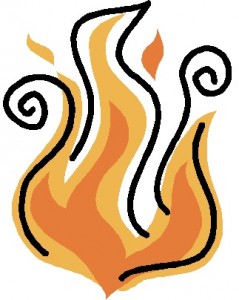If your character is as deep as he should be, that means he’s going to have a backstory. A character’s history is integral to what he (or she!) will do throughout the course of your plot. Sometimes it’s handy for your readers to know firsthand what happened in your character’s past so that they can understand what’s rumbling on in that brain of his. This is usually done through flashbacks, and Sol Stein tells us that there are bad ways to do it and good ways to do it. This is because “all fiction should seem to be happening now,” but flashbacks “break the reading experience” (Stein 143).
Flashback Tips
Here’s Stein’s recommended ways of conveying backstory with a minimal amount of disturbance to the reader.
First, he says, only do it if absolutely necessary. Your readers don’t have to know every single thing about your character, even though you do. Only mention the parts that enhance the present story. The next point is, to me, the most important to keep in mind:
Whenever possible, the flashback should be an immediate scene rather than an offstage narrative summary. The reader needs to witness the flashback rather than be told about what happened.
You can go into a flashback directly of segue into it. The object is to make the transition to the flashback as unobsturusive as possible. The first sentence of a flashback needs to be arresting.
What this means essentially is that you should write flashbacks the same as any other scene in your narrative. Implement dialogue, showing vs. telling, the five senses, etc. Just make sure that you indicate to your readers when you switch to the past and when you switch back. This can be something as simple as, “She could still remember that day, so many years ago. The sun was shining, much like today, and the wind was…” and so on.
Ask yourself if you are fullfilling these guidelines when writing flashbacks. And if that doesn’t work, Stein’s final word of advice is “moving flashback material into the foreground and eliminating the need for a flashback” (150). This is what happens often in the first ten or fifteen minutes of a movie: characters discussing their childhood or reecnt events so that the audience (or reader, in our case) can learn important info. Since we have the power of the written page rather than a script, writers also have the option of writing it into the character’s thoughts. That’s essentially what I did in my scene that reveals an essential part of Rahab’s past.
 Into the Flames: Flashback!
Into the Flames: Flashback!
“Rahab.” Professor Tenenbaum furrowed his eyebrows at her, and she could feel his concern. “Did you get burned badly when you were younger?”
“No.” She looked down at her arms, skinny and covered in fine blond hairs. She had a couple moles by her left elbow. She took a deep breath. “My brother did, though. He and my other brother, Mark, were goofing around in the back yard. My dad was barbequeing, and he went to take the chicken inside to Mom.”
She couldn’t continue. She could see it still, even though it had been almost ten years before: Luke and Mark chasing each other with the can of lighter fluid, seeing how far they could squirt it. She still didn’t know where they thought that was a good idea—because they were boys, she suspected. And then Mark knocking over the grill, the still burning coals tumbling out onto the lawn, and Luke tripping over it and landing squarely in the middle of it all. She scrunched her eyes closed and scooted back down on the bench, trying to block out the stench, the screaming—a discordant blend of Luke, Mark, and her own high-pitched wailing. It seemed like an eternity that she and Mark stood there, watching the flames lick Luke’s skin, dancing across his arm, before their father found them and pulled him out. And that hadn’t even been the worst part; it was the evening spent in the emergency room, and the weeks after where Luke’s skin wouldn’t stop peeling, oozing through the bandages and taking on a ghastly color and shape. Even now, at age twenty-two, the skin grafts had left spidery scars up his arm and across his chest.
Rahab took a deep breath and realized that she was crying. Professor Tenenbaum had placed his scratchy jacketed arm around her shoulders. She couldn’t bring herself to look at him.
What’s your main problem when writing flashbacks? Do you forget to put it into immediate scene? Do you add more than your readers really need to know? Or do you have a trick up your sleeve for writing perfect backstory that you’d like to share with the rest of us?
I think my problem with writing flashbacks is that I did it so poorly in the past that I abandoned writing them altogether. So I have little practice in writing them — and what I don’t practice, I prudently leave out of my stories. 😉
And what you gleaned from Stein only reinforces my feeling: Flashbacks “break the reading experience.” If other writers do flashbacks well, I don’t mind reading them. But I’m not sure I’m ready to tackle flashbacks myself.
(On the other hand, though, I seem to have done okay with Holly’s memory of the water tower conversation with Owin. Hmmm….)
For now, I’ll just keep sprinkling my narration and dialogue with hints of memory. 🙂
Beautiful site!